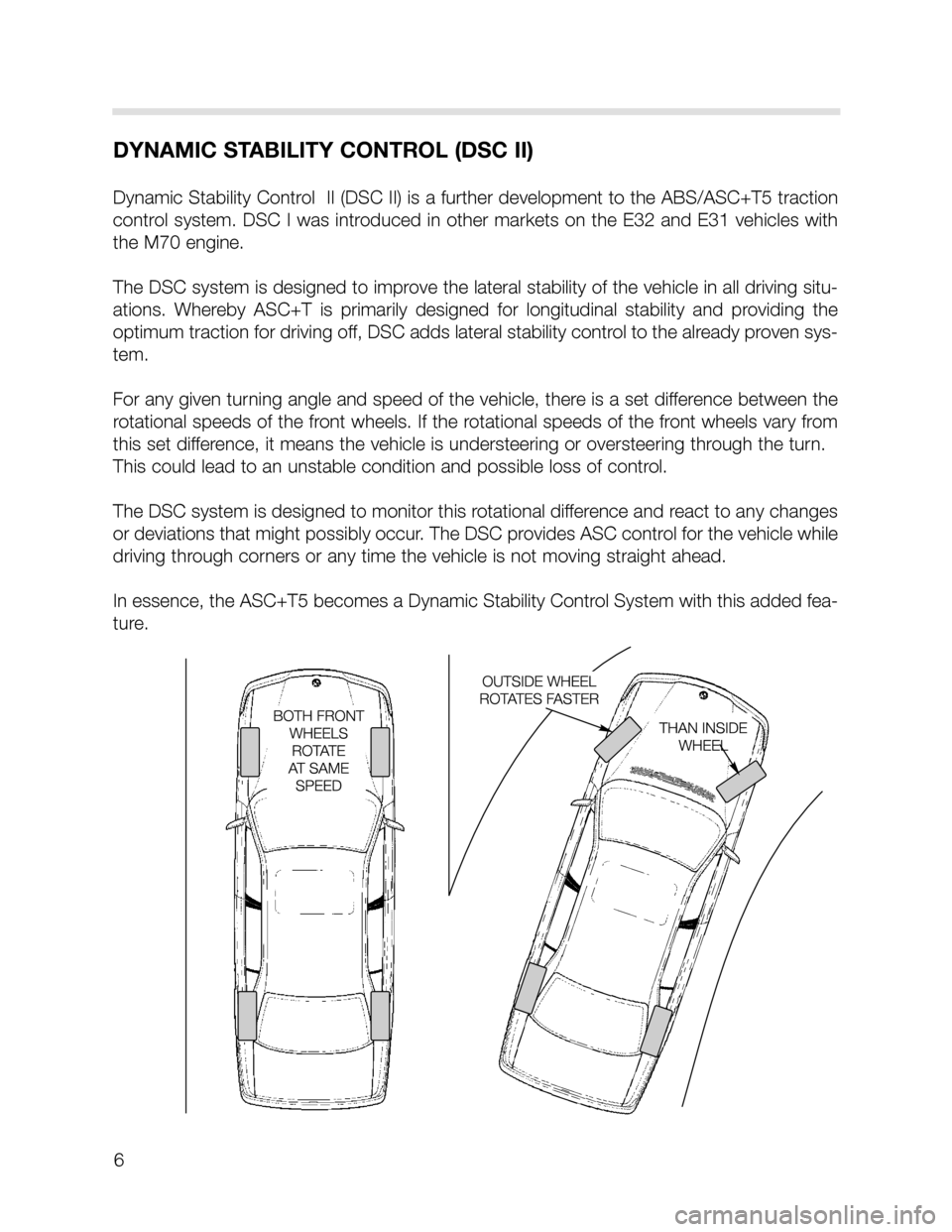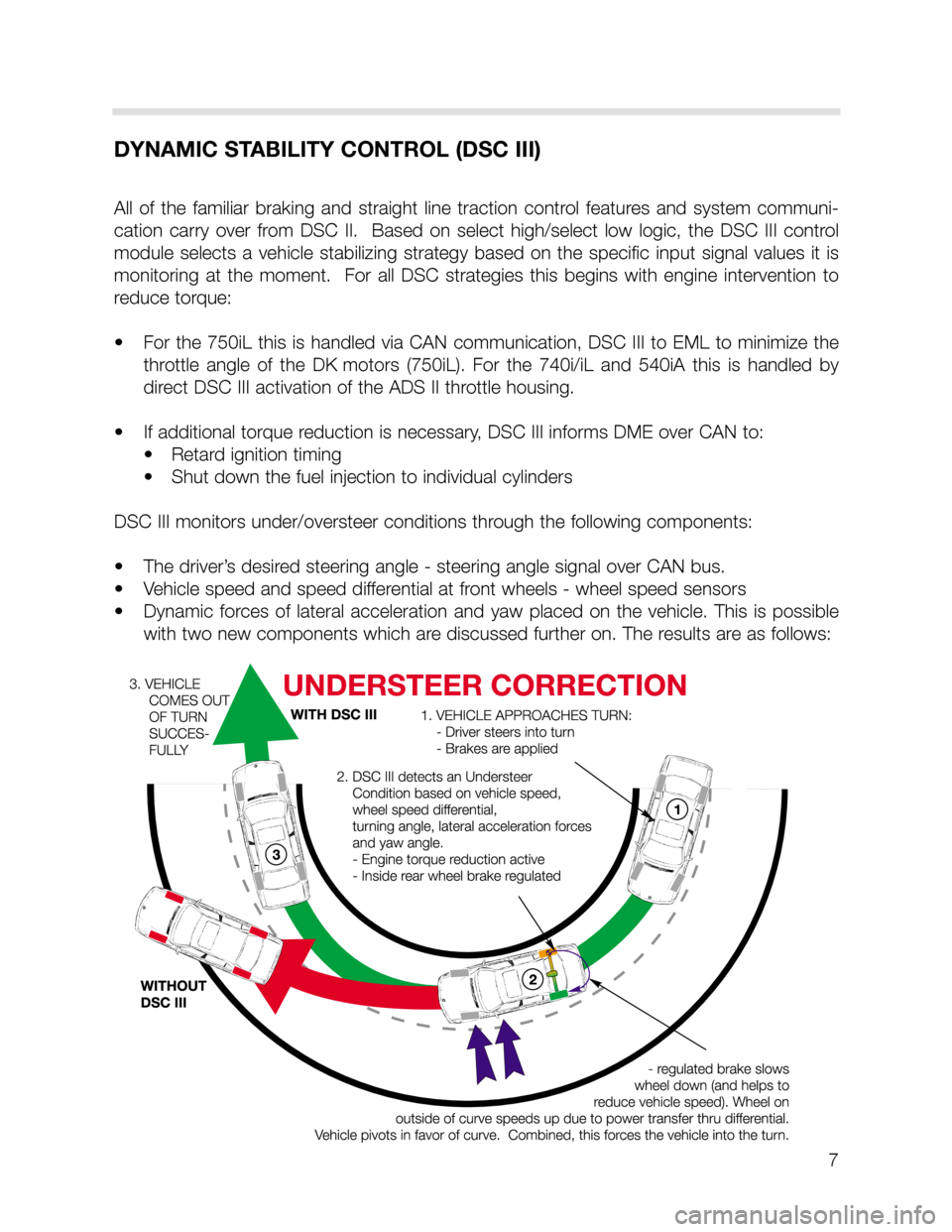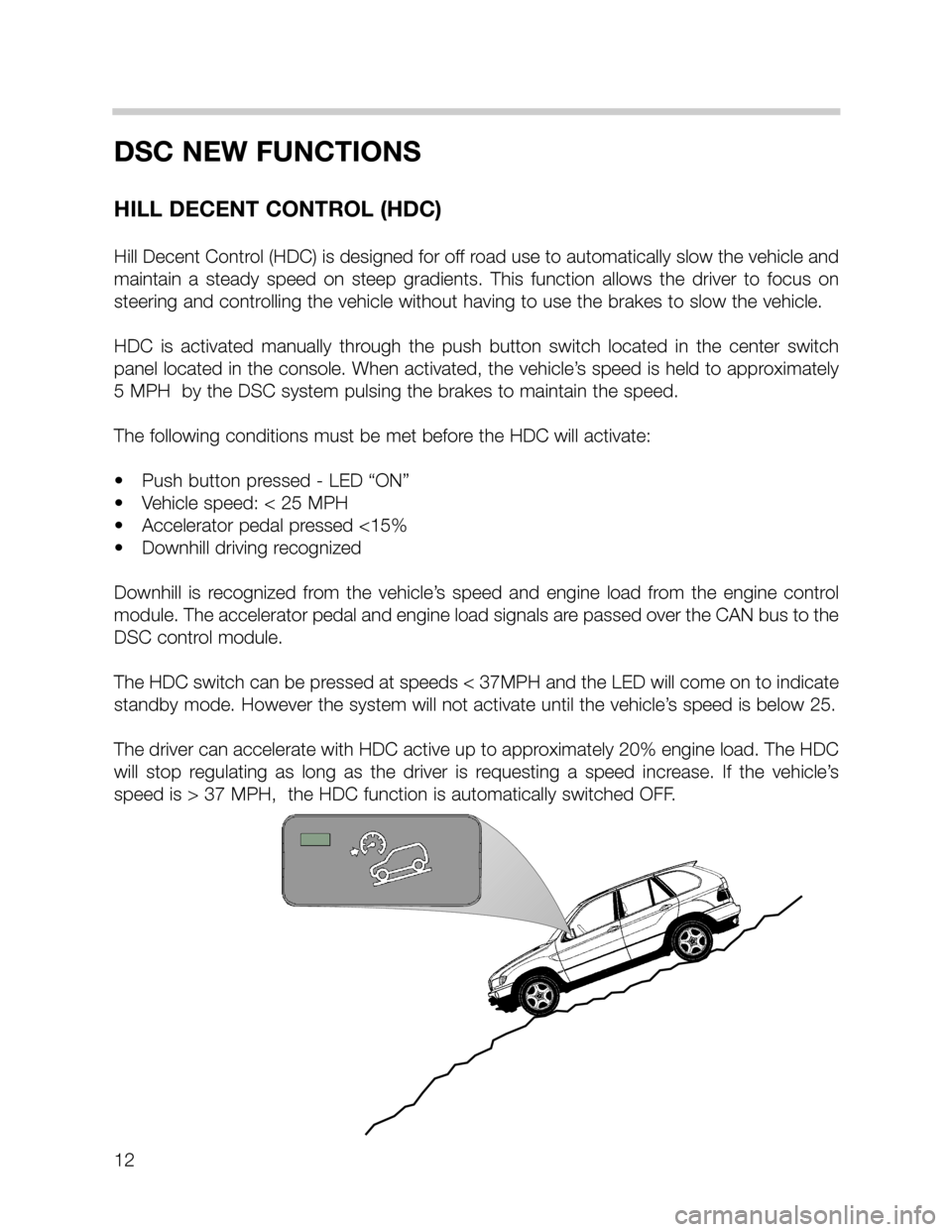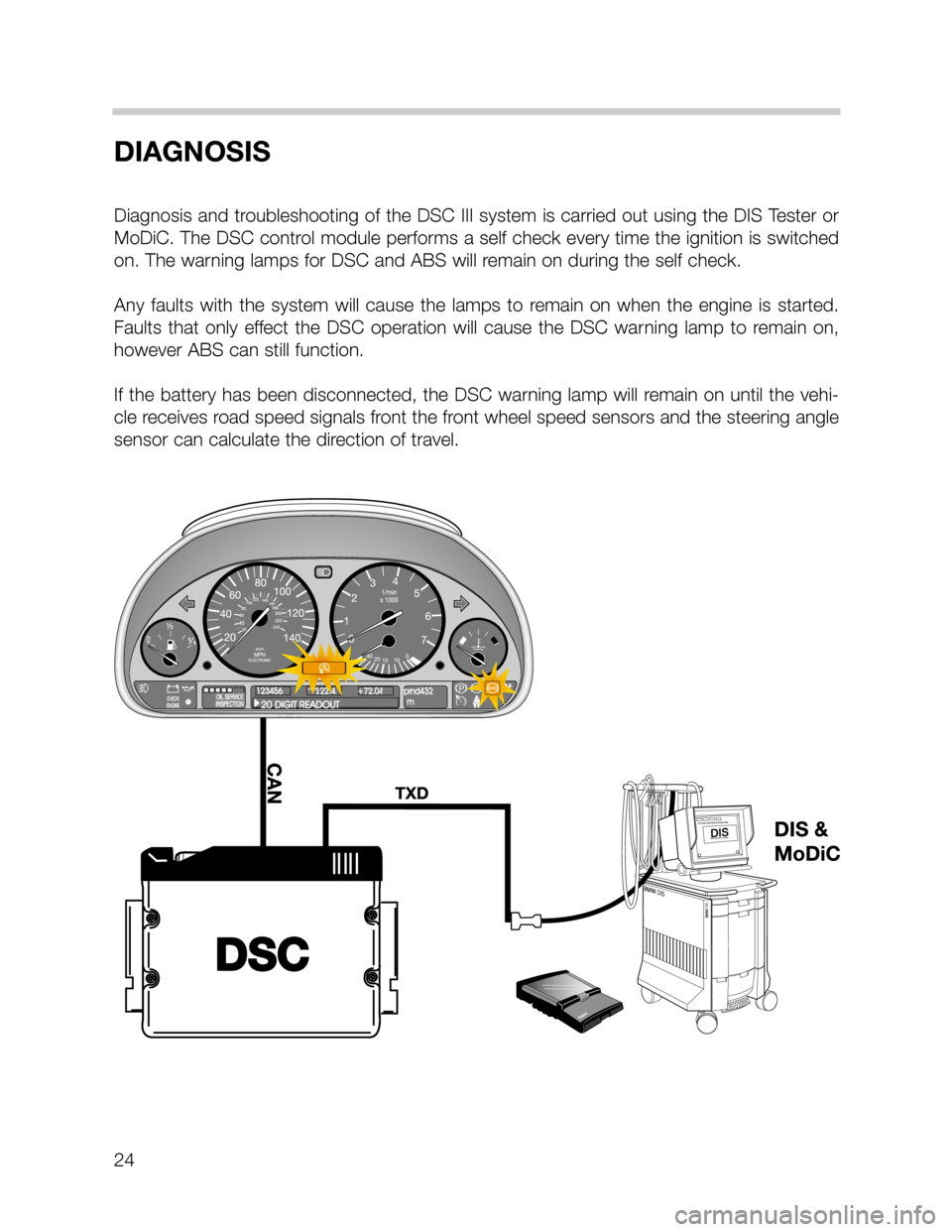engine BMW X5 2001 E53 DSC System Workshop Manual
[x] Cancel search | Manufacturer: BMW, Model Year: 2001, Model line: X5, Model: BMW X5 2001 E53Pages: 24, PDF Size: 1.77 MB
Page 6 of 24

6
DYNAMIC STABILITY CONTROL (DSC II)
Dynamic Stability Control II (DSC II) is a further development to the ABS/ASC+T5 traction
control system. DSC I was introduced in other markets on the E32 and E31 vehicles with
the M70 engine.
The DSC system is designed to improve the lateral stability of the vehicle in all driving situ-
ations. Whereby ASC+T is primarily designed for longitudinal stability and providing the
optimum traction for driving off, DSC adds lateral stability control to the already proven sys-
tem.
For any given turning angle and speed of the vehicle, there is a set difference between the
rotational speeds of the front wheels. If the rotational speeds of the front wheels vary from
this set difference, it means the vehicle is understeering or oversteering through the turn.
This could lead to an unstable condition and possible loss of control.
The DSC system is designed to monitor this rotational difference and react to any changes
or deviations that might possibly occur. The DSC provides ASC control for the vehicle while
driving through corners or any time the vehicle is not moving straight ahead.
In essence, the ASC+T5 becomes a Dynamic Stability Control System with this added fea-
ture.
Page 7 of 24

7
DYNAMIC STABILITY CONTROL (DSC III)
All of the familiar braking and straight line traction control features and system communi-
cation carry over from DSC II. Based on select high/select low logic, the DSC III control
module selects a vehicle stabilizing strategy based on the specific input signal values it is
monitoring at the moment. For all DSC strategies this begins with engine intervention to
reduce torque:
•For the 750iL this is handled via CAN communication, DSC III to EML to minimize the
throttle angle of the DK motors (750iL). For the 740i/iL and 540iA this is handled by
direct DSC III activation of the ADS II throttle housing.
• If additional torque reduction is necessary, DSC III informs DME over CAN to:
• Retard ignition timing
• Shut down the fuel injection to individual cylinders
DSC III monitors under/oversteer conditions through the following components:
• The driver’s desired steering angle - steering angle signal over CAN bus.
• Vehicle speed and speed differential at front wheels - wheel speed sensors
• Dynamic forces of lateral acceleration and yaw placed on the vehicle. This is possible
with two new components which are discussed further on. The results are as follows:
Page 12 of 24

12
DSC NEW FUNCTIONS
HILL DECENT CONTROL (HDC)
Hill Decent Control (HDC) is designed for off road use to automatically slow the vehicle and
maintain a steady speed on steep gradients. This function allows the driver to focus on
steering and controlling the vehicle without having to use the brakes to slow the vehicle.
HDC is activated manually through the push button switch located in the center switch
panel located in the console. When activated, the vehicle’s speed is held to approximately
5 MPH by the DSC system pulsing the brakes to maintain the speed.
The following conditions must be met before the HDC will activate:
• Push button pressed - LED “ON”
• Vehicle speed: < 25 MPH
• Accelerator pedal pressed <15%
• Downhill driving recognized
Downhill is recognized from the vehicle’s speed and engine load from the engine control
module. The accelerator pedal and engine load signals are passed over the CAN bus to the
DSC control module.
The HDC switch can be pressed at speeds < 37MPH and the LED will come on to indicate
standby mode. However the system will not activate until the vehicle’s speed is below 25.
The driver can accelerate with HDC active up to approximately 20% engine load. The HDC
will stop regulating as long as the driver is requesting a speed increase. If the vehicle’s
speed is > 37 MPH, the HDC function is automatically switched OFF.
Page 24 of 24

24
DIAGNOSIS
Diagnosis and troubleshooting of the DSC III system is carried out using the DIS Tester or
MoDiC. The DSC control module performs a self check every time the ignition is switched
on. The warning lamps for DSC and ABS will remain on during the self check.
Any faults with the system will cause the lamps to remain on when the engine is started.
Faults that only effect the DSC operation will cause the DSC warning lamp to remain on,
however ABS can still function.
If the battery has been disconnected, the DSC warning lamp will remain on until the vehi-
cle receives road speed signals front the front wheel speed sensors and the steering angle
sensor can calculate the direction of travel.